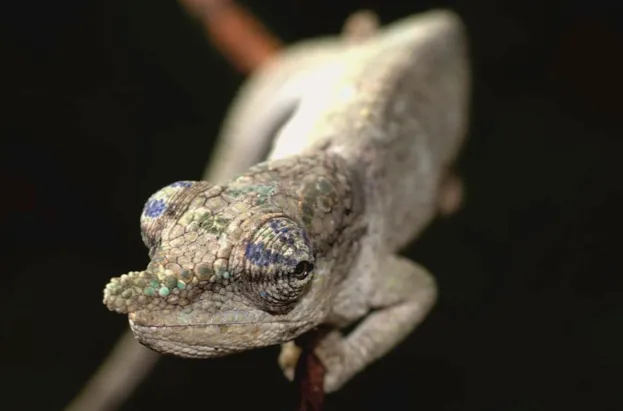A team of German researchers have recently described three chameleon species in Madagascar.
The reptiles belong to the Calumma genus and were recognised as new species due to their locations, morphologies and colorations.
This was confirmed using DNA barcoding and comparisons with other closely related species.
The aim of the expeditions was to study reptiles and amphibians in the country by gathering data on population sizes.
“Calumma uetzi is of course an exceptionally beautiful species, so we are excited about it, but Calumma juliae was an unexpected member of this species complex from the central east of the island,” says Mark Scherz, a PhD student at Ludwig Maximilian University of Munich (LMU).
Calumma juliae was found in an isolated forest fragment by the side of one of Madagascar’s main roads, which is believed to be the only place that this species occurs.
Despite repeated visits to the forest, only female Calumma juliae have been identified so far.

Calumma juliae has only been found in a forest fragment © David Prötzel (ZSM/LMU)
“We hope that this area can be protected as soon as possible,” says lead author David Prötzel.
“Since our discovery of this chameleon just two years ago, a significant area of its tiny home has already been lost to deforestation.”
Madagascar is home to more than 420 reptile species, and more than 40 per cent of the world’s 206 known chameleon species.
One of the newly described chameleon species, Calumma uetzi, has an incredible colour pattern, which is particularly vivid during mating displays.
The male tries to impress the female with a yellow, violet and red display. If he’s unsuccessful, the female may turn her skin almost entirely black and attack.
Only a single male specimen of the third new species, the Calumma lefona, was found – an X-ray of its head showed a large hole in the roof of its skull, directly over the brain.
The biological function of this skeletal anomaly is something of a mystery, but the researchers think it may help in thermoregulation.
“Based on everything we know about these species, they all have very small distribution ranges,” says Frank Glaw of the Bavarian State Collection of Zoology.
“But many new protected areas are now being established in Madagascar, which will certainly be important for the future of Madagascar’s unique diversity.”
Read the paper in Zoological Journal of the Linnean Society.
